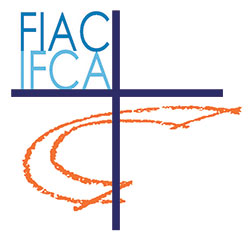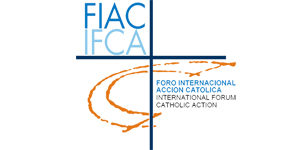The role of the priest assistant in Catholic Action Msgr. Domenico SIGALINI
Preamble
In placing before you some ideas, as they occur to me, regarding the priest assistant in Catholic Action, I should like to start with a theological preamble which I find important to repeat, given the danger of falling back into the “temple mentality”. It is a useful theological reflection which helps both laity and priests in arriving at a correct concept of their relation within the Church.
We are priests not of the temple, but of the New Testament.
1. Our way of looking at the priesthood is still linked to the Old Testament mentality. This causes us to see the priesthood and the laity as being on opposite sides
Man has always had the great desire of being able to meet God: Your face, LORD, do I seek…”[Ps 27:8]; “My tears have been my food day and night, while people say to me continually, “Where is your God?” [Ps 42:3]. In the Old Testament the priesthood was “invented” in order to find a response to this seeking. There was a definite separation between priests and common Israelites. There was a specific caste for service in the sanctuary. Woe to the commoner who tried to enter: he could face death. (cf. Nb). The old religion was based on a clear distinction between the sacred and the profane, the priests and the laity, cult and ordinary life.
Cult was organized through a specific system of ritual separation. For man to get close to God he had to be sanctified. He had to pass from the profane to the sanctified state. This could only happen through a number of ritual separations (cf. Heb 9). Meeting God was linked to:
– A sacred place, set aside from ordinary activities, which could only be reached by observing a number of rules. A mediator was required, the priest, who was prepared by ritual baths, sacred vestments, and ritual purity.
– Two grades of priesthood: one for the outer sanctuary, and the other for the Holy of Holies: the High Priest.
Moreover, there had to be a victim, and its blood. Such a system forced a great distance between people and priest. They were just efforts to try and meet God. But what communion could there be between a dead animal and the Living God? Between the blood of a dead animal and the conscience of a living person?
The end result was a rigid separation between cult and ordinary life. This would be a bizarre religious position, surely within the context of God’s pedagogic project for man, within His plan of salvation. But it waited for its definite fulfilment in the life, death and resurrection of Jesus.
2. Jesus’ position
Now Jesus is a lay person. He is not separated from the rest of us. He is not placed apart. He has changed the ancient concept linking sanctity with separation, replacing it with the new idea of sanctification through solidarity and communion. Some phrases from the Gospel illustrate this:
– before making your offering, go and be reconciled with your brother
– the Sabbath was made for man, not man for the Sabbath
– it is mercy that I want, not sacrifice.
Between the two ways of serving God: rites and separations or solidarity with man, Jesus has chosen the latter.
The death of Jesus was not a ritual sacrifice in the ancient sense of the word, but a supreme expression of communion with God and solidarity with man. Not a ritual sacrifice, but a definite decision opening the passage from an external, conventional cult to a real, personal religion.
In Christ all separation has been abolished. We have passed from the “devil” to the “symbol”. Separation is a function typical of the devil (devil means separator in the Greek language).
The priesthood of Christ does not arise from any rites separated from the reality of existence. He has taken this reality and transformed it radically under the impulse of the Holy Spirit, changing it into a filial obedience to God and brotherly solidarity with man.
Such is the exercise of the common priesthood. It does not amount to taking part in liturgical celebrations, but in the transformation of ourselves and of the world through divine charity under the impulse of the Holy Spirit.
This is the actual and essential meaning of being lay people. The priesthood which belongs to all baptized persons is this submissiveness to God as being his children, and solidarity with all brethren. Real sacrifice is not something close to existence, but part of existence itself. It amounts to placing oneself in the hands of the Holy Spirit for the furtherance of communion throughout the world.
Rm 12:1 “I appeal to you therefore, brothers and sisters, by the mercies of God, to present your bodies as a living sacrifice, holy and acceptable to God, which is your spiritual worship.” A married couple who love each other are actually putting this fundamental worship into practice. The priesthood does not stand in contrast with the lay state, but is its definition.
One says that there is a ministerial priesthood that is valid and actual, and a common priesthood which is symbolic, if one may compare. However, one should actually invert the argument: the real priesthood which is more important is that called “common”, which is held by all Christians. The purpose of the sacrifice of Christ was that of creating the common priesthood.
The ministerial priesthood is a means established by Christ in view of the exercise of the common priesthood. It is the sacrament of Christ as mediator. Since it is only through the sacrifice of Christ that all can turn to God, the establishment of a ministerial priesthood is necessary.
II. The service of the ecclesiastic assistant in Catholic Action in the light of the “four notes” (AA 20)
It is in the light of the above reflection that the service to be given by a priest assistant to an association having the following qualities stands to be regulated:
1. The ecclesial character: living what the Church is called to live
The first choice in Novo Millennio Ineunte is the contemplation of Jesus. He stands at the centre, it is for Him that we live; it is towards Him that our life together in an association should lead us. It is He whom we wish to serve. Jesus should give sense and taste to our lives. The assistant who performs the service of Jesus as Shepherd should be the first to make contemplation his definite experience.
2. The lay character: making the best effort towards sanctity
The life of a faithful lay person does not develop close to the world, but is in the world itself. Lay people become saints in the concrete realities of daily life, such as the love of one’s family, the married state, and the commitments arising from work and study. For lay people these are the equivalent of the priest celebrating the Eucharist and other sacraments. Catholic Action members are not the specialists of the parish, but specialists of sanctity in the lay state. One needs rediscover the splendour of being a Christian: baptized, priest, king and prophet in God’s Kingdom. This lay sanctity immediately turns into a mission, a communication of the Gospel. We cannot keep back from communicating that which Jesus is working within us.
So many believers become tired in their life of faith. This happens because when doubts arise we do not face them; we do not dare involve others in the strenuous effort of keeping to the Gospel. Instead, we keep looking at ourselves in the mirror. Faith grows by being passed on to others. The Gospel gives you light only if you place it in the window to be seen by all. The priest assistant should offer all possible personal support to lay members in recognizing the light of the Word, and orienting themselves in the way of sanctity.
3. Collaboration with the pastors (hierarchy): the courage of self commitment
I am convinced that, once the essence of the lay state has been fully thrashed out, with its implications of lay sanctity, Christian dignity, and service to the world, Catholic Action would do well to involve itself intelligently in the pastoral projects of the Church and the interventions arising from Her pastoral sections. There should be no discussion, no reservations regarding allegiance to the Holy Father. In interpreting the teachings of the Church in the best and most orthodox manner there are the dignified and balanced views of various movements and groups. The Pope, the Church, and the diocesan Church have very much at heart the existence of an association of lay people who are ready to take upon themselves the programme of the Bishop. Such an association would ask to be involved in building it up, but the important point is that it becomes their own, in an intelligent manner.
4. Organic unity: finding a home for communion
Lay people are willing to live this life in common, in an association in which they find support. Such an association sustains their outlook, and offers the atmosphere of a fellowship which results in growth. Facing life in a group is not the same as going it alone. The personal formation of the members should go further than the life of the group, and can be obtained even if one cannot be living in the parish all the time. Is there a type of help which is personalized, and which can support one’s personal formation even in the surroundings of the family? The priest assistant provides all the support necessary for members to reach their own formation, as well as ensuring that every moment of the life of the group may contribute to such formation.
The service of the priest assistant to Catholic Action can be summarized as follows:
• Offering ways towards sanctity through the life of the sacraments. Only he can bring one to meet Christ through the Eucharist and the Sacrament of Reconciliation.
• Fostering an ecclesial feeling: he is capable of helping others to understand the true meaning of the Church and the know-how of living in alliance, not in conflict.
• Acting as a spiritual guide. This involves the ability of viewing the lives of members in the light of the Word of God, in an atmosphere of continual prayer so as to reach new ways of sanctity.
• Helping others discover their real vocation in life. There is a way of judging life in the light of the Word which enables one to understand one’s responsibilities towards the world and the Church.
• Keeping alive the experience of communion, together with all other components of the Christian community: groups, movements, associations, those who are in charge both in the Church and in society.
• Keeping up the link with the Bishop and all other priests, so that Catholic Action may not be seen as a body outside the daily life of the Church.
• Establishing connections with the new pastoral services, both diocesan and national, fostering especially the collaboration between laypeople and priests.
II African Continental Meeting
YOU WILL BE MY WITNESS IN AFRICA. Reality and prospects for the laypeople’s formation. The contribution of Catholic Action/2 – Bujumbura, August 21st/25th 2002
- rsris_slide_link:
- wps_subtitle:
- Msgr. Domenico SIGALINI
- pl_view_post:
- 2956








